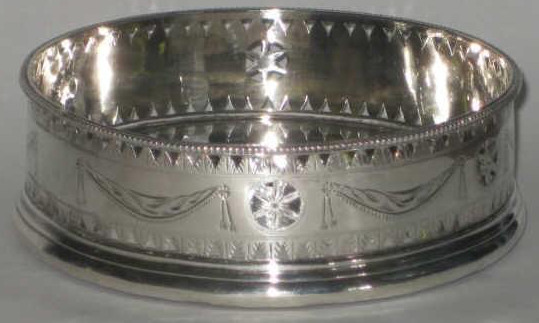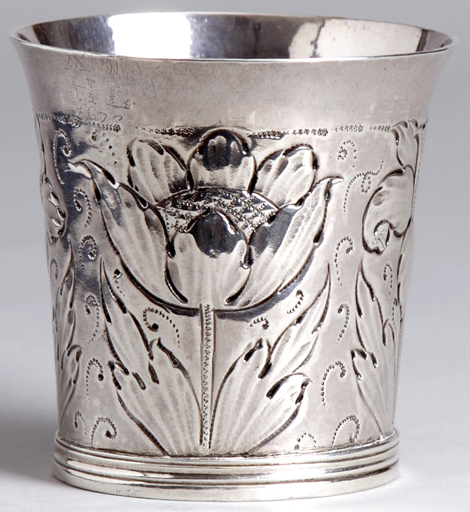While hallmarks and manufacturers’ backstamps are the most accurate means of determining the age of a piece of silver, these can be worn away or indistinct. In such cases, it’s possible to determine an age range by recognizing the style of decoration on the piece, and knowing when that style was popular. Here are some of the basic decorating techniques and when they were employed.
Silver Shapes and Forms
A basic knowledge of historical styles of architectural and decorative accessories is a helpful starting point, as shapes and forms evolved with the changing styles of decoration. For example, an Art Deco era teapot will be in an entirely different shape from its Federal style and Victorian counterparts.
Silver Decorating Techniques
Embossing – An embossed item features designs and patterns on the front of the piece of sheet silver that are created by hammering from the back side. Popular in the 17th century, embossing is also called Repousse, especially when the embossing is in high relief.
Engraving – An engraved piece has decorative patterns that are cut into the surface of the metal using a tool called a graver which produces fine, sharp lines. Engraving is often used to apply a coat of arms, a monogram, or an inscription to a piece, and the style of engraving is often a clue to the age of the piece itself., especially if it is bright cut engraving, in which the engraving was done at an angle to create facets that would reflect light. Bright-cut engraving techniques were used mainly in the late 18th century, although sometimes engravings of both types were added to existing pieces of earlier vintage.

A Hester Bateman, London, 1788 George III silver wine coaster with chased and pierced in Adam style gallery
Hand Piercing and Machine Piercing – This technique describes a design that is punched out of a sheet of silver using cutting tools. Pieces of silver were cut away in a pattern created by positive and negative spaces. This was a laborious and time consuming process used mainly for table ware such as baskets. By the late 18th century, hand piercing was replaced with machine piercing, in which the pierced effect was created by machine. Machine pierced items tend to be more elaborate and precise than those that are hand pierced.
Die Stamping – Although the finished product may resemble embossing, die stamping is a mechanical means of production, used for mass production of lower cost items. In this technique, the silver sheet is stretched, and holes may appear in the raised decoration. This method was used after the beginning of the 19th century.
Engine-turning – A series of parallel lines cut into the surface of the metal, engine-turning is done by machine and creates a textured effect. This style of decorating was popular after the 1790’s.
-by p4A Contributing Editor Susan Cramer.
Reference & Further Recommended Reading:
To search the Prices4Antiques antiques reference database for valuation information on hundreds of thousands of antiques and fine art visit our homepage www.prices4antiques.com
-
Don’t forget chasing! It’s the opposite of repousse work–embossing from the front side.





1 comment
Comments feed for this article